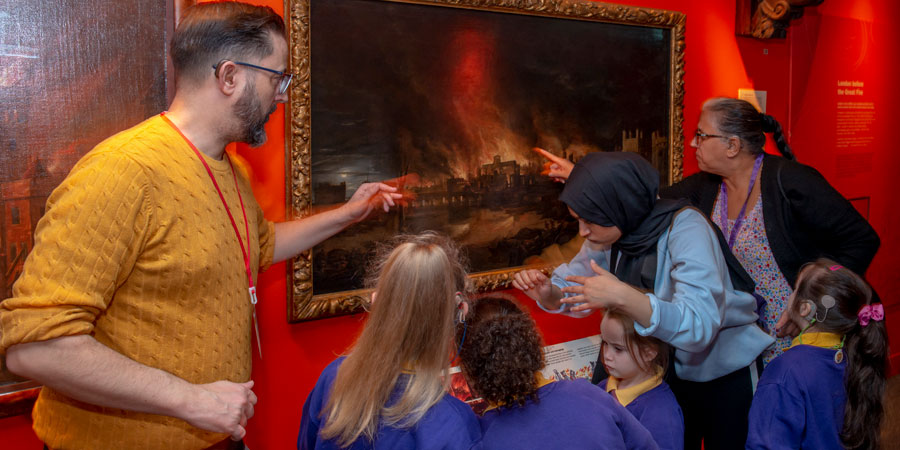Reimagining the Restoration
Reimagining the Restoration is a project using original research on Samuel Pepys’s diary to present new perspectives on life in the 17th century. Together, the Museum of London and the University of Leicester have created teaching resources which feature children, women, people of colour, and deaf people at the time of the Great Fire of London. The project aims to give teachers new ways to teach the Great Fire, give learners a sense of place and ownership over their history, and to spark interest in the 17th century.
In November 2022, we invited three London primary schools for deaf children to take part in a full day of Great Fire activities at the museum. From getting hands-on with 17th-century objects, to working together on a mixed-media artwork, to learning about the early history of British Sign Language, every student (and teacher) got a chance to learn something new about life four centuries ago. The students talked about historical events, wondered what life would have been like, and considered how London has changed since 1666. For some, it was their first time visiting a museum.
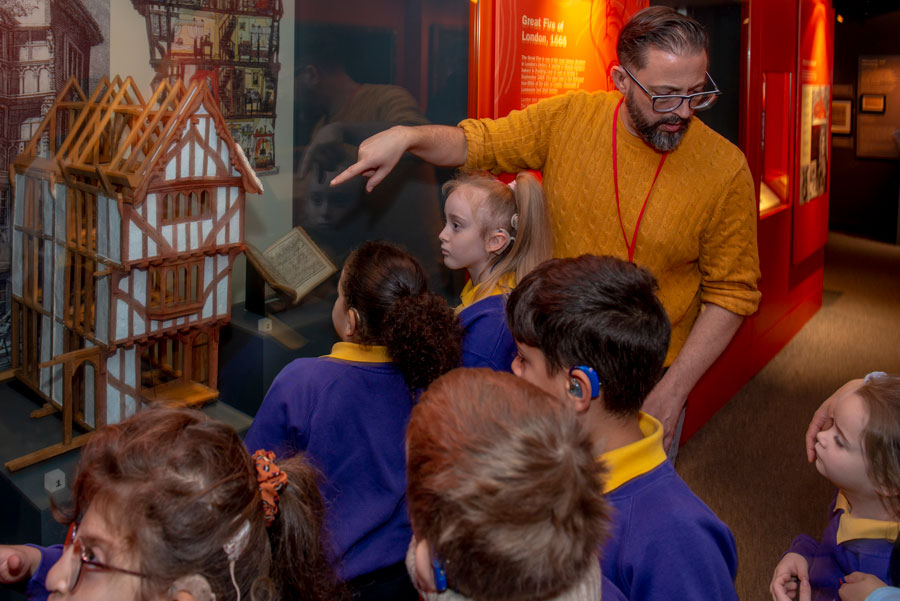
Following their visit to the museum, each school took part in further workshops on the Great Fire and Deaf history. Working with two arts educators, we delivered workshops between November 2022 and January 2023 which incorporated art, history, and Deaf identity. Students learned about a 17th-century deaf artist and discussed the lack of surviving paintings of historical deaf people. They then created their own portraits to make their mark on history. These pictures included not only their likenesses and things to showcase their deafness, but additional details highlighting their interests, cultures, and aspirations.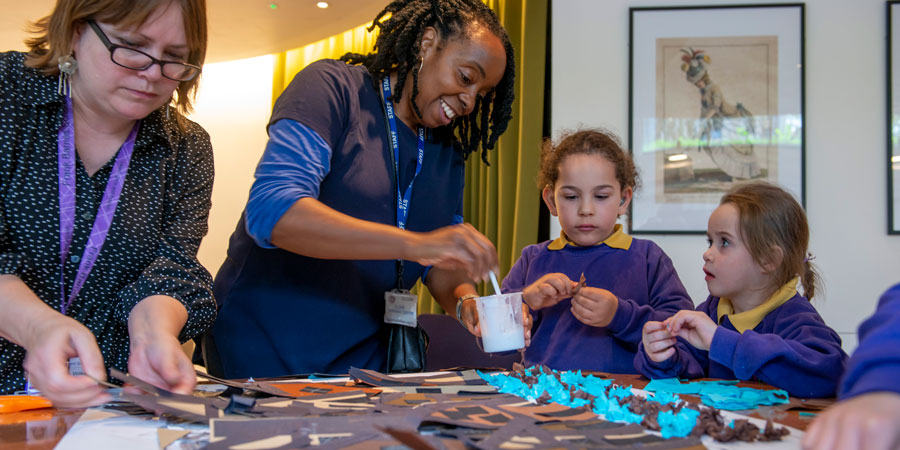
Many of the students we worked with use British Sign Language in their daily life, but in the 17th century this language had not yet developed. Students across all three schools learned about the history of sign language and were able to try out fingerspelling alphabets used in 17th-century Britain. The students tested these alphabets to see how practical they might have been for everyday life, spelling their names and the names of their schools.
In one school, learners used their own experiences as deaf people to design a deaf-friendly 17th century house. Through discussions with each other and their teachers, they decided that the house needed big windows so they could sign clearly, a special plaque to let firefighters know that deaf people lived there, and even a working deaf-friendly doorbell.
To give teachers new tools for teaching the Great Fire of London, the project has produced a set of brand new classroom resources covering the events of the Great Fire from start to finish. These resources were designed based on a KS1 teacher focus group, with the aim of providing easy-to-implement resources that work either in a series or on their own. In addition to activity sheets, three new animated videos provide the perfect introduction to life in the 17th century, Samuel Pepys, and how London was rebuilt after the fire. The resources are accompanied by detailed teachers’ notes to provide context and ideas for implementing the activities into lessons.
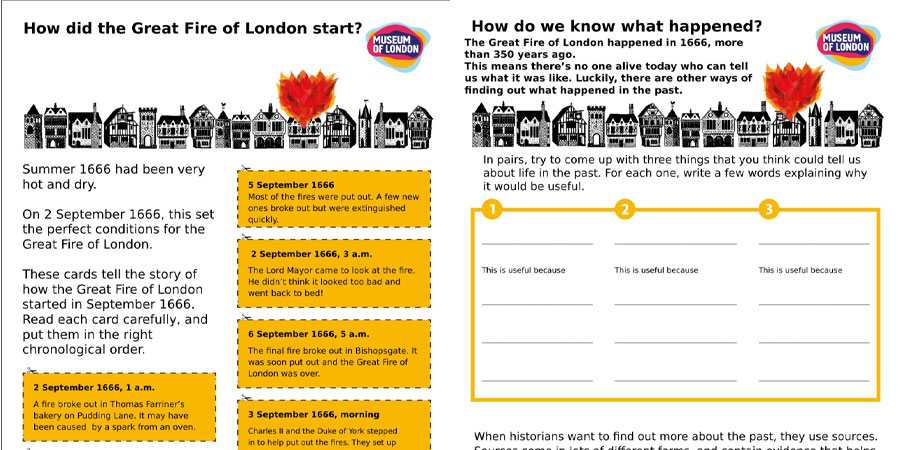
To highlight the lives of deaf people in the 17th century, the project has produced a new full-colour comic book about three deaf Londoners in the 1660s. The comic includes representations of 17th-century signing that are inspired by historical sources. A BSL interpreted video version of the comic is available.
The comic is accompanied by resources aimed at primary school learners that encourage them to explore Deaf history and to have conversations about how life for deaf people has changed since the 1660s. Some of the characters from the comic can also be seen in the KS1 animations, allowing teachers to easily combine Deaf history with work on the Great Fire.
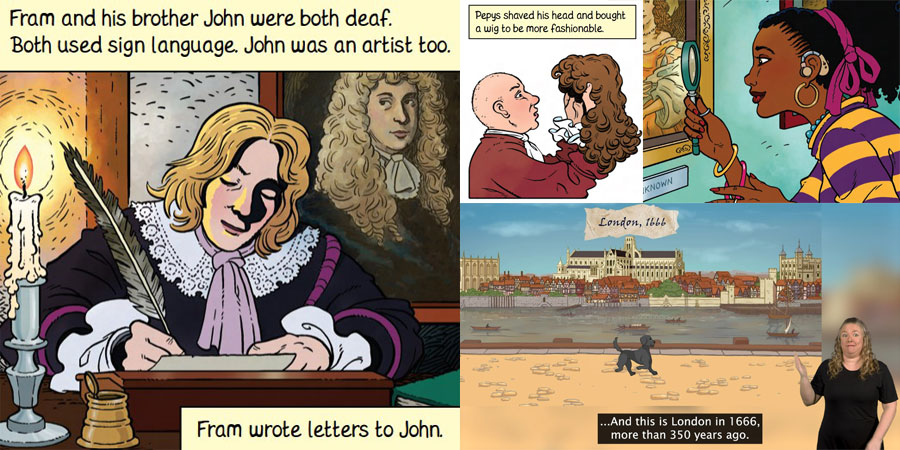
The project’s principal investigator is Dr Kate Loveman, University of Leicester.
Funded by the Arts and Humanities Research Council (grant ref. AH/W003651/1 )









